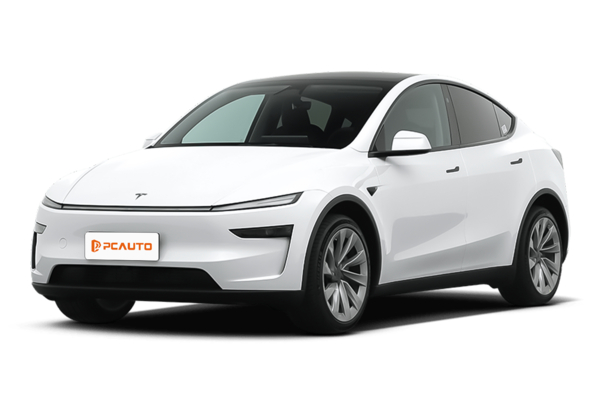Q
How to drive Tesla Model Y 2024?
When driving the Tesla Model Y 2024, first make sure that you are familiar with the vehicle's controls,including the steering wheel, brakes, and accelerator pedal. After getting in the car, you need to adjust the seat, rearview mirror, and steering wheel to a comfortable and appropriate position. Start the vehicle by using the key card or using the mobile phone key. Understand the gear operation, which is usually designed with hugging gears, with clearly marked Drive, Reverse, and Park functions. During driving, pay attention to maintaining proper following distance and speed, and stay alert when using driver-assistance function. Bkraking correctly when parking, and make sure the vehicle is parked properly. Meanwhile, you must comply with Malaysian traffic regulations.
Special Disclaimer: This content is published by users and does not represent the views or position of PCauto.
Related Q&A
Q
How to replace the air filter of Tesla Model Y?
Here are the steps to replace the air filter of Tesla Model Y: First, open the front trunk of the vehicle and find the air filter box inside. Next, use the appropriate tool to release the clips securing the filter housing, then carefully remove the old air filter. When installing the new filter, ensure it is oriented correctly and fits snugly within the housing. Finally, re-secure the housing clips and close the front trunk. Take care during the process to avoid damaging any vehicle components.
Q
How many cameras does the Tesla Model Y have?
The Tesla Model Y is typically equipped with multiple cameras,including front-facing, side-facing, and rear-view cameras, etc., to support driver assistance and safety functions. However, the exact number of camera may vary depending on the model configuration and production batch. The model with common configuration has approximately 8 cameras.
Q
How to set up a home address in Tesla Model Y?
You can set up your home address in Tesla Model Y through the vehicle's central control display. Usually, you need to access the navigation system settings, find the "Address" or "Destination" menu, then follow the on-screen prompts to enter your home address. Once confirmed, save the information. Note that specific steps may vary slightly depending on your vehicle's software version.
Q
What's the height of Tesla Model Y?
The height of the Tesla Model Y is typically about 1624 millimeters. However, the actual height of the vehicle may vary slightly depending on the configuration and optional components.
Q
How to set up a home address in Tesla Model Y?
To set up your home address in Tesla Model Y, you can generally follow these steps: First, find the navigation app on the vehicle's central touchscreen. Then, find the "Set Destination" or similar option in the navigation interface. Next, select the "Add Favorite Location" or "Set as Home" function. Enter your home address in detail, and the system will confirm and save it. Please note that different software versions may have slight variations in the specific steps.
Q
What is the battery capacity of the Tesla Model Y?
The battery capacity of the Tesla Model Y in Malaysia typically ranges from 50 - 75 kWh, but the exact figure may vary depending on the model configuration and version.
Q
What's the amount of electricity needed to fully charge the Tesla Model Y?
The amount of electricity required to charge the Tesla Model Y can vary due to multiple factors, including battery capacity, charging method, and remaining battery power at the time of charging. Generally speaking, to fully charge a standard range Tesla Model Y by using the common home charging station, it usually takes approximately 50 - 60 kWh of electricity, while long-range and high-performance versions may require around 70 - 80 kWh.
Q
When should I maintain my Tesla Model Y?
The maintenance interval of the Tesla Model Y is typically based on mileage and usage time. It is generally recommended to regularly maintain it every 12 months or 10,000 to 12,500 miles. However, the specific maintenance time still needs to be determined based on the actual condition of usage and the vehicle. For example, frequent driving under harsh conditions or intensive use may require more frequent maintenance.
Q
Which one is better, Tesla Model Y or Model 3?
The Tesla Model Y and Model 3 each have their own advantages. The Model Y offers more spacious interior, making it ideal for family trips, along with superior range performance. The Model 3, on the other hand, performs well in handling and cost-effectiveness. If you prioritize cabin space and long-distance travel, the Model Y may be the better choice; if you seek driving experience and cost-effectiveness, the Model 3 is an excellent option. The decision depends on your personal needs and purpose of vehicle usage.
Q
How to remove the door panel of Tesla Model Y?
To remove the door panel of the Tesla Model Y, you first need to prepare the appropriate tools, such as a screwdriver and a plastic pry bar. Then carefully remove the decorative cover at the door handle and loosen the relevant screws. Next, use the plastic pry bar to gently pry open the fixing clips along the edge of the door panel. The operation should be gentle to avoid damaging the panel and related parts.
Latest Q&A
Q
How to Caculate Toyota Corolla Cross Loan? Grasp the Idea Here
When purchasing a Toyota Corolla Cross, several factors need to be considered when calculating the loan amount, such as the vehicle price, down - payment ratio, loan term, and interest rate. Suppose the vehicle price is RM130,000, with a 10% down - payment (RM13,000), and you're taking a 90% loan (RM117,000) to be repaid over 7 years (84 months). Calculated at the common 3.5% annual interest rate in Malaysia, the monthly repayment is approximately RM1,600, the total interest is about RM17,000, and the total repayment amount is around RM134,000. The actual amount may vary due to bank promotions or credit scores.
In Malaysia, different banks like Maybank and Public Bank may offer slightly different interest rates and terms. It's advisable to compare the options of several banks. Also, pay attention to other fees in the loan contract, such as handling fees and insurance.
Moreover, the longer the loan term, the lower the monthly repayment pressure, but the higher the total interest. So, choose the term reasonably according to your financial situation. Before buying a car, you can also consider second - hand car loans or Balloon Payment plans. These methods may have different interest rates and repayment structures, which are suitable for consumers with different needs.
Q
What is Toyota Corolla Cross? Here's the Full Introduction for You
The Toyota Corolla Cross is a compact SUV positioned between the C-HR and the RAV4. It is specifically designed to meet the needs of urban families. In the Malaysian market, it offers two powertrain options: a 1.8L gasoline version and a 1.8L hybrid version, with maximum power outputs of 140 horsepower and 122 horsepower respectively. It is paired with a CVT transmission, balancing fuel efficiency and a smooth driving experience.
This vehicle comes standard with the Toyota Safety Sense intelligent safety system, which includes active safety features such as pre - collision warning and lane departure warning. It also has a wheelbase of 2,640mm and a spacious trunk, making it suitable for the travel needs of large Malaysian families.
It's worth mentioning that the Corolla Cross has specially enhanced anti - rust treatment for its chassis in the Southeast Asian market to adapt to the local humid climate. Its hybrid version uses Toyota's fourth - generation THS II technology, and the combined fuel consumption can be as low as 4.3L/100km, which is quite attractive in the face of the rising oil prices in Malaysia.
As a global strategic model of Toyota, the Corolla Cross maintains a competitive price after being locally assembled (CKD) in Malaysia. Its durability and the advantages of the after - sales network particularly meet the considerations of Malaysian consumers regarding long - term vehicle ownership costs. Competitors in the same class, such as the Honda HR - V and the Mazda CX - 30, also have their own characteristics. It is recommended that consumers take test drives and make comparisons based on their own preferences.
Q
What is the Toyota Corolla Cross Tyre Size? Check Standard Here
The standard tire sizes of the Toyota Corolla Cross in the Malaysian market vary depending on the model and configuration. The petrol version usually comes with 215/60 R17 tires, while the hybrid version may use larger 225/50 R18 tires. This difference is mainly to match the performance requirements and handling characteristics of different powertrains.
The numbers in the tire size represent the tread width (in millimeters), the aspect ratio (the percentage of the sidewall height to the tread width), and the wheel diameter (in inches) respectively. For example, 215/60 R17 means a tread width of 215 millimeters, an aspect ratio of 60%, and a compatible 17 - inch wheel.
Choosing the right tire size is crucial for driving safety. It not only ensures the accuracy of the speed display on the dashboard but also optimizes fuel efficiency and grip. When Malaysian car owners replace their tires, it is recommended to refer to the original factory specifications first or consult an authorized service center. If upgrading the tire size, they need to pay attention to whether it will affect the suspension system or body clearance. At the same time, they should choose tire patterns suitable for the tropical rainy climate (such as those with good drainage) to improve handling on wet roads.
Regularly checking tire pressure and wear is also key to extending tire life. This is especially important in the year - round high - temperature environment, where more attention should be paid to changes in tire pressure.
Q
What are the Toyota Corolla Cross Problems? Learn Before You Buy
The Toyota Corolla Cross, a popular compact SUV in the Malaysian market, offers reliable overall performance. However, some owners have reported a few common issues. For instance, in certain models, there might be a slight gearbox jerk when driving at low speeds. This is usually related to the tuning characteristics of the CVT gearbox. Fortunately, regular maintenance and software upgrades can help improve the situation.
In addition, some owners have mentioned that there's still room for improvement in terms of sound insulation, especially when driving at high speeds. Tire noise is particularly noticeable. It's recommended to choose higher - specification tires or install additional sound - insulation materials to optimize the situation. Moreover, the infotainment system in some early models may respond slowly, but subsequent versions have been improved through system updates.
In Malaysia's hot and rainy climate, it's advisable for owners to pay special attention to regularly checking the battery status and maintaining the air - conditioning system to ensure the long - term stable operation of the vehicle.
The Corolla Cross's advantages lie in Toyota's consistent high resale value and low maintenance costs. Its hybrid version is more suitable for users who prioritize fuel economy. Overall, this vehicle is a good fit for Malaysian family users who seek practicality and reliability. It's recommended that potential buyers choose the appropriate version according to their own needs and take a test drive before purchase to fully understand the vehicle's characteristics.
Q
What is the Toyota Corolla Cross Boot Space? Here's the Boot Capacity
The Toyota Corolla Cross, a popular compact SUV in the Malaysian market, offers a practical and flexible trunk space. In its standard state, it has a volume of 487 liters, which is large enough to accommodate 3 to 4 large suitcases or daily household items for a trip. If you fold down the rear seats in a 60:40 ratio, the loading space can be further expanded to nearly 1,300 liters, making it suitable for carrying long items or large pieces of luggage.
It's worth noting that the trunk of the Corolla Cross has an opening width of 1,050 millimeters and a ground clearance of only 720 millimeters, making it convenient for users to load and unload heavy items. This is especially suitable for Malaysian users who often need to carry strollers or shopping items. Among vehicles in the same class, its space design takes into account both depth and height, and there's also an additional hidden storage compartment under the floor, which can be used to store tools or personal items in an organized way.
For Malaysian consumers who value practicality, these detailed designs can significantly enhance the convenience of daily driving. In the hybrid version, the battery pack is cleverly placed under the rear seats without sacrificing the trunk space, which demonstrates Toyota's mature technology in space optimization.
View MoreRelated News

Tesla improves the range and performance of Model 3/Y without changing the battery capacity
Kevin WongJul 3, 2025

Xiaomi YU7 Sells Out 289K Units in 1 Hour – Model Y’s New Rival?
JohnJun 27, 2025

Tesla's Rising Stock vs Robotaxi's Traffic Violations
MichaelJun 24, 2025

World's First Gas-Electric Tesla: Would You Try It?
WilliamMay 20, 2025

BYD Sealion 7 Surpasses Tesla Model Y to Become Australia’s Best-Selling EV
Kevin WongMay 9, 2025
View More


















Pros
Cons